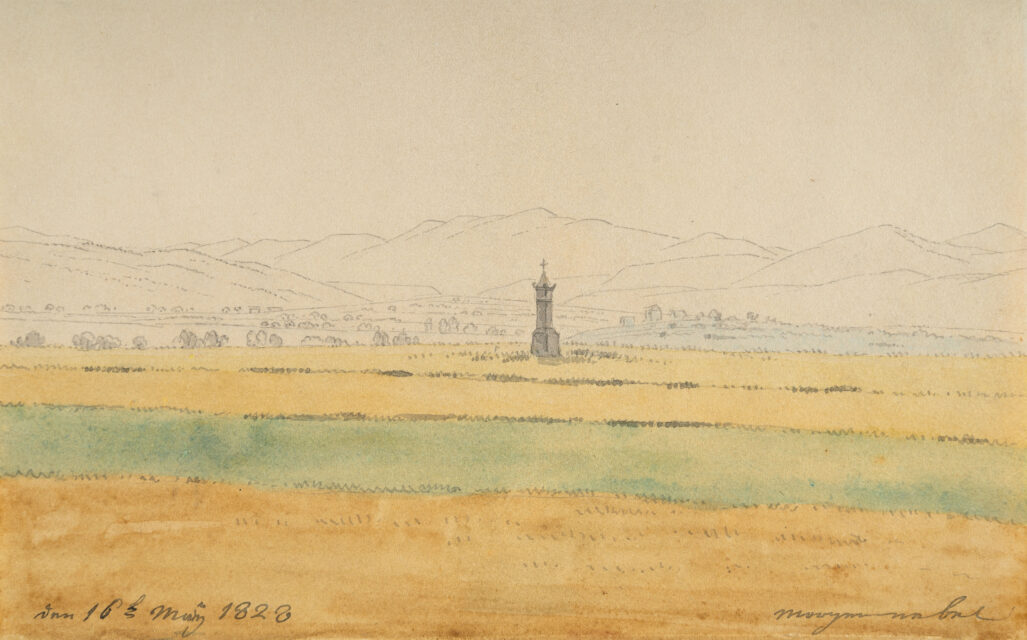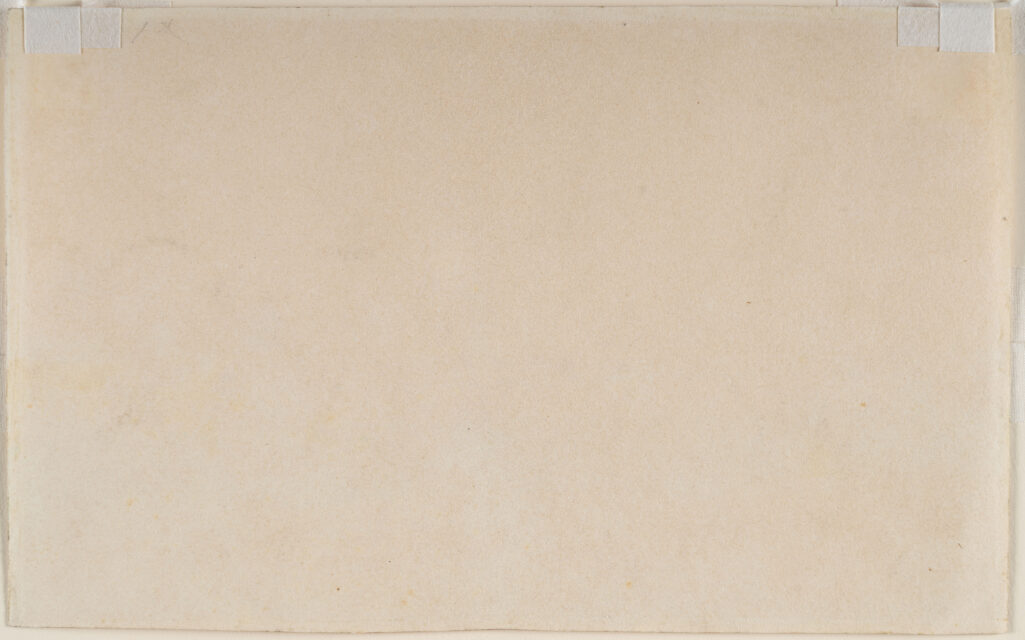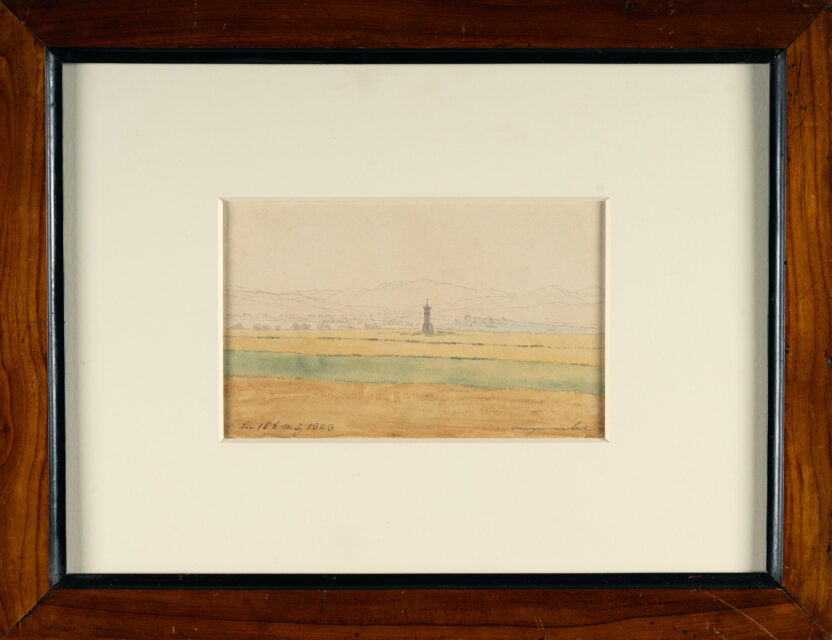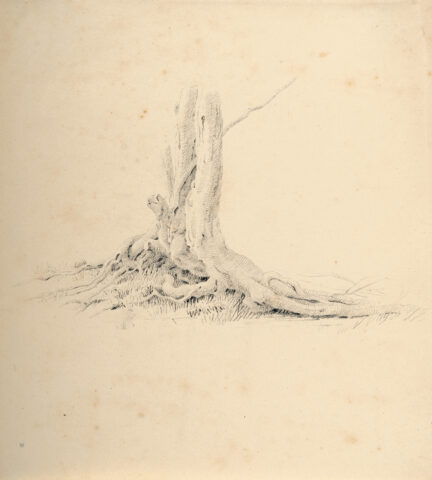
“Morgennebel – Böhmische Landschaft” (Morning mist in a Bohemian
Details
Literatur:
Christina Grummt, Caspar David Friedrich. Die Zeichnungen. Das gesamte Werk, München 2011, vgl. Kat.-Nrn. 899–912 und 928–93.
Provenienz:
Privatsammlung Düsseldorf;
im Erbgang in eine Privatsammlung, Chemnitz.
Descrizione
The inventor of Romanticism, Caspar David Friedrich, was born in Greifswald 250 years ago and created art for a new era in Dresden – this is the title of the latest exhibition at the Hamburger Kunsthalle. After studying at the Academy in Copenhagen, Friedrich settled in Dresden in 1798, where he became the dominant figure in the art scene in Dresden after 1800. Here he made his epochal break with the traditions of Baroque and Classicism, here he united landscape and religion, here he created a pictorial world that challenged and sometimes overtaxed the viewer – so radically modern were his pictorial inventions, which aimed to create their very own aesthetic effect. Friedrich “romanticised” the “ordinary” and “familiar” in the sense of Novalis, reshaping and exaggerating the motif of landscape, placing it at the centre of his aesthetic and, not least, making it an expression of his sacred understanding of the world.
In our watercolour, the viewer’s gaze falls into a landscape that stretches far into the depths, over a slightly rising hill divided into horizontal strips of colour and into a valley depression, behind which is a mountain range. Friedrich spreads out the landscape, the view is not limited, it is not a landscape composition in the classical sense, where trees or other repoussoirs enter the landscape space – in his work the landscape is open, “unbounded” as it were, limited to the section that presented itself to Friedrich. And yet he does not just depict a simple section of nature; rather, Friedrich subordinates nature to a system of drawing and compositional calculation: The lower half of the sheet is carefully constructed from four horizontal, two-dimensional strips of colour, whose abstract form contrasts with the undulating silhouette of the mountains, which Friedrich has indicated only with a fine pen, without colour. Our watercolour is an outstanding example of how Friedrich sees nature – in his work, nature does not look as it is, but as he sees it. He subjects nature to a subjectivism that was only possible during the Romantic period!
Friedrich therefore uses sparing drawing techniques to create a landscape that presents more than just a section of nature: Right on the border, where the abstracted form merges into an observation of nature, there is a stone wayside shrine with a cross on the hill. It is no coincidence that it is placed right in the middle of the sheet – the wayside shrine is the centre of power in the picture, filling the sheet with the religious symbolism that is so characteristic of Friedrich and is further enhanced by the handwritten caption “Morgennebel” (morning mist), staged like a title. In Friedrich’s work, fog is far more than just a weather phenomenon, it is subject to a poetry all of its own that has religious traits.
Helmut Börsch-Supan has also pointed out that in the inscription, after his serious illness in 1825/26, which he had not yet completely overcome in the spring of 1828, Friedrich expresses the hope that the rising morning sun will dispel the impenetrable fog of the night, which is a metaphor for his illness. As a kind of therapy, Friedrich would have undertaken a hike to Bohemia in the spring of 1828, during which our watercolour was created in the Teplitz region.
Friedrich had come to Teplitz in northern Bohemia on 9 May 1828 together with August Philipp Clara, an engraver and landscape painter from the Baltic region who worked in St. Petersburg and with whom Friedrich had been acquainted since a visit to his studio two years earlier. They arrived in an area that Friedrich had known well since 1807. On the very day of their arrival, Friedrich produced a watercolour of the ruins on the castle hill near Teplitz (Staatliche Kunstsammlungen zu Dresden, Kupferstich-Kabinett, inv. no. 1913-33, cf. Grummt 929) and, according to the dated watercolours, remained in the area until 16 May (Copenhagen, Statens Museum for Kunst, Den kongelige Købberstiksamling, inv. no. KKS 1975-605, cf. Grummt 912). Our watercolour, also painted on 16 May, is similar to the Copenhagen sheet in its stripe-like development of the landscape – on both sheets the foreground is captured in its colourfulness in broad brushstrokes. Friedrich was evidently interested in capturing the colour impressions offered to him by the morning mist in the view of the landscape. The yellow and green stripes in the foreground stand out against the light blue of the middle ground, where a small settlement is visible.
These two abstract landscape watercolours are accompanied by another watercolour painted on 10 May in the surroundings of Teplice (Greifswald, Pommersches Landesmuseum, inv. no. Gr166/1970.B686, cf. Grummt 910). All three sheets have the same format of approximately 128 x 205 mm, which is why Christina Grummt, the author of the catalogue raisonné of Friedrich’s drawings, assumed that they once belonged to a sketchbook that has since been dissolved. So far, 14 sheets of the same format can be attributed to this sketchbook (Grummt 899-912), some of which bear the watermark of the Bautzen-based paper factory Carl Friedrich August Fischer. Friedrich used it between September 1824 and May 1828; the last sheet is the watercolour in Copenhagen created on 16 May, to which our watercolour can be assigned as the 15th sheet. When Friedrich’s estate was auctioned in Dresden after his death in December 1843, it had already been broken up into individual sheets – although it is no longer possible to determine whether our sheet was also offered there. – Minimally light-stained in the cut-out of the mount. Fresh colours and in very fine condition.
Dr Peter Prange
With a written certificate by Prof. Dr Helmut Börsch-Supan, Berlin, dated 15 June 2018.
* Tutte le informazioni includono la commissione a carico dell'acquirente (27%) senza IVA e senza garanzia. Salvo errori.
** Tutte le informazioni più la commissione a carico dell'acquirente e l'IVA e senza garanzia. Salvo errori.
*** Con riserva: L'offerta è stata accettata al di sotto del limite. L'acquisizione dell'opera potrebbe essere ancora possibile nella nostra vendita post-asta.
R = Le opere d'arte regolarmente tassate
N = Opere d'arte soggette a tassazione differenziata e provenienti da un paese non UE
Non è consentita la riproduzione e la distribuzione privata o commerciale di tutte le illustrazioni delle opere esposte nell'archivio della mostra e dell'asta. Tutti i diritti riservati.






